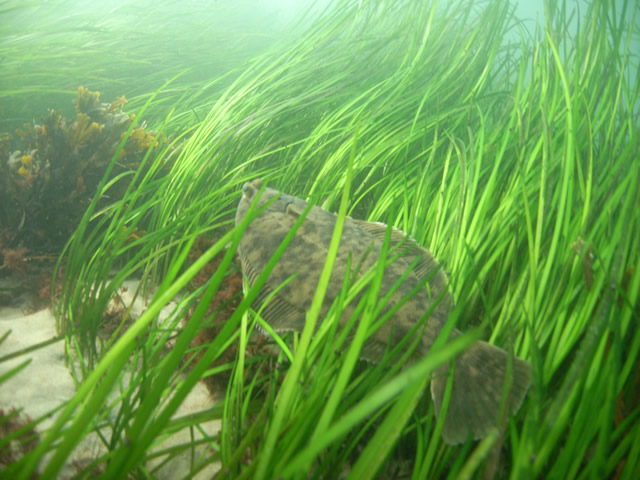Science News
A Good Fish Tale

We always appreciate a good fish tale—not the old-fashioned kind, but the sustainable seafood kind. With one eye on these headlines and the other on our Seafood Watch app, we try to make conscientious decisions about what we eat and how our choices affect the ocean.
The past month has seen some positive news on this front (aside from our recent grouper story), but we’re not advocating going fish-crazy! In fact, the first article we’re pointing to shows a disturbing graphic of changes in fish biomass in the northern Atlantic from 1900 to 2000. But as NPR’s Robert Krulwich says, perhaps we’ve already adjusted to these changes:
Maybe, deep down, we sense that some foods are no longer plentiful so we make it the fashion to eat less of them? Do we reset our appetites from generation to generation?
He illustrates the behavior change with two very different menus.
Speaking of menus and NPR, we recently found this Dan Barber TED Talk through NPR’s TED Radio Hour. If you haven’t watched it, you’ll never believe how absolutely beautiful fish farming can be. The Spanish fish farm he describes also purifies water and provides a sanctuary for birds!
DNA Fish Tales
A recent study in Current Biology used DNA to explore the effectiveness of marine reserves at protecting and sustaining fish. New Scientist has the details:
…with the use of new DNA profiling techniques, scientists have shown that by devoting less than a third of an area to a marine reserve network, you can double the number of juvenile fish that settle in the rest of the area.
These protected areas are actually replenishing other areas for commercial fishing. Do you think this study will affect policy to create more reserves?
Another recent study, this time in Nature Communications, describes using genetic markers to track down illegal catches in Europe. This technique can pinpoint the origin of fish so authorities know if similar-appearing fish are legal or illegal. ScienceNOW reports:
A €4 million pan-European project, launched in 2008 and called FishPopTrace, has devised a much-anticipated way to differentiate marine populations of the same species with up to 100% accuracy.
More Good News
The National Oceanic and Atmospheric Administration (NOAA) issued a report two weeks ago on the improvements of US fisheries. The news is mostly good: 86% of fishing stocks are not overfished. According to Discover’s 80beats blog, this is due to the Magnuson-Stevens Reauthorization Act of 2006:
The act states that each year NOAA must give status updates on all fish populations within 200 miles of the US Coast. If the fisheries are hurting, fishermen must stop catching those fish until their numbers recover.
Weird Fish Tale
Did you hear the one about the bottlenose dolphins that have helped Brazilian fishermen for over a hundred years? Weird, but true! They work together to gain a bigger catch! The research is published in Biology Letters; you can read more here or here.
Okay, with all of this research, we’ve finally made our seafood decision, but how shall we cook it? Luckily, the Pew Environment Group recently posted some “Recipes for Success” that share famous chefs’ takes on sustainable seafood. Num!
Do you have a fish tale? A good recipe? Please share it with us below!
Image: NOAA